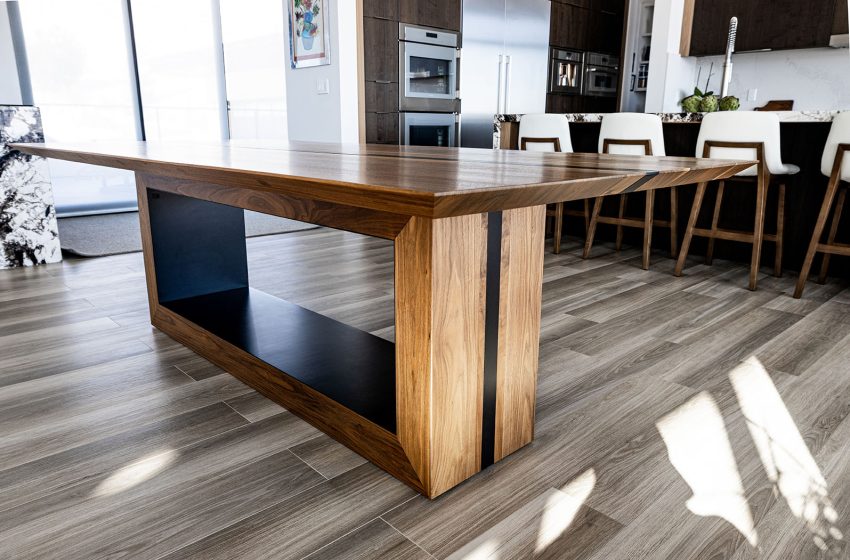How to Choose the Right Wood for Your Custom Furniture

Choosing the right wood for your furniture is important because it influences everything from longevity to aesthetics. When creating a bespoke piece, the wood you choose defines the style and functionality of your furniture, reflecting your style and taste. But with so many wood varieties available, it’s easy to feel overwhelmed when picking one. Here’s how to pick the best wood for your bespoke furniture project.
Understanding Different Wood CategoriesHardwoods vs. Softwoods
The first step in selecting wood is understanding the distinction between hardwoods and softwoods. Despite what the names imply, the difference doesn’t strictly relate to density.
Hardwoods
These woods are often denser, making them durable and well-suited for long-lasting furniture. Hardwoods come from deciduous trees that shed their leaves annually, which makes their wood fibers denser and stronger compared to softwoods.
Common examples include oak, maple, walnut, and cherry. Oak is celebrated for its strength and pronounced grain patterns, making it a favorite for bold, sturdy furniture. Walnut stands out with its deep color and luxurious feel, often chosen for creating showpiece furniture that makes a statement. Cherry wood offers beautiful warm tones that deepen and mature over time, adding character and a sense of history to any room. Lastly, maple is loved for its smooth, sleek look, often lending a clean and modern touch to furniture designs.
Softwoods
Softwoods, derived from coniferous trees like pine, cedar, and fir, are generally lighter and less dense than hardwoods. This makes them more pliable and easier to work with, often resulting in cost-effective and versatile furniture options. While they may not possess the same level of toughness as hardwoods, they come with plenty of advantages.
For example, pine is a popular choice because it is affordable and lightweight, making it ideal for creating charming rustic or farmhouse-style pieces with natural character. Even when left unfinished, its grain pattern adds a touch of visual warmth to furniture. Cedar stands out because of its aromatic natural oils that repel insects, making it a prime candidate for storage chests, wardrobes, and outdoor furniture. Fir, known for its straight grain and resistance to warping, works well for structural components and painted pieces.
Engineered Woods
For certain custom furniture projects, engineered woods like plywood and Medium Density Fiberboard (MDF) work as solid wood alternatives. While these aren’t solid wood, they’re made from wood fibers and are strong. MDF works well for painted furniture due to its smooth surface, while plywood adds strength without significant weight.
Factors to Consider When Choosing Wood for Custom Furniture
- Durability and Strength
Consider how much use your furniture will endure. Heavy-use items like dining tables, chairs, or bed frames require strong, durable woods like oak, maple, or walnut. These hardwoods resist wear and tear and maintain structural integrity over time. If you’re crafting a piece that won’t endure as much strain, such as a decorative table, softwoods like pine might suffice.
- Aesthetic Qualities
Wood’s natural grain, color, and finish define a piece’s style. Walnut has a dark, luxurious tone, making it perfect for sophisticated spaces. Cherry wood’s warmth enhances any room, deepening in color with age. For lighter aesthetics, maple’s clean lines and subtle grain make it a versatile choice. If a rustic look appeals to you, go for the knotty grain of pine or the rough texture of reclaimed wood.
- Cost and Budget Considerations
Custom furniture ranges widely in price, depending on the wood type used. Hardwoods like walnut and cherry cost more due to their durability and appearance, but they are worthwhile investments for furniture expected to last generations. Softwoods such as pine are budget-friendly alternatives, particularly for large projects where cost efficiency is important.
- environmental-impact and Sustainability
Being environmentally conscious is increasingly important when choosing wood for bespoke furniture pieces. Look for woods certified by organizations like the Forest Stewardship Council (FSC), which ensures sustainable harvesting practices. Opting for reclaimed wood or sustainably sourced lumber reduces environmental impact while adding unique character to your piece.
Matching Wood to Your Furniture’s Purpose
Indoor vs. Outdoor Use
Certain woods excel in outdoor settings due to their weather resistance. Teak, for example, is naturally water-resistant, making it a staple for outdoor furniture. Cedar’s aromatic properties repel pests and withstand moisture, making it another excellent choice. For indoor pieces, you have more freedom to choose woods based on appearance and texture.
Furniture Function and Room Style
Consider what role the furniture will play in the room. For example, a walnut dining table exudes elegance, while a maple desk offers clean, modern lines suitable for home offices. When designing a room, try to coordinate wood types for a cohesive look or mix and match contrasting grains to create visual interest.

